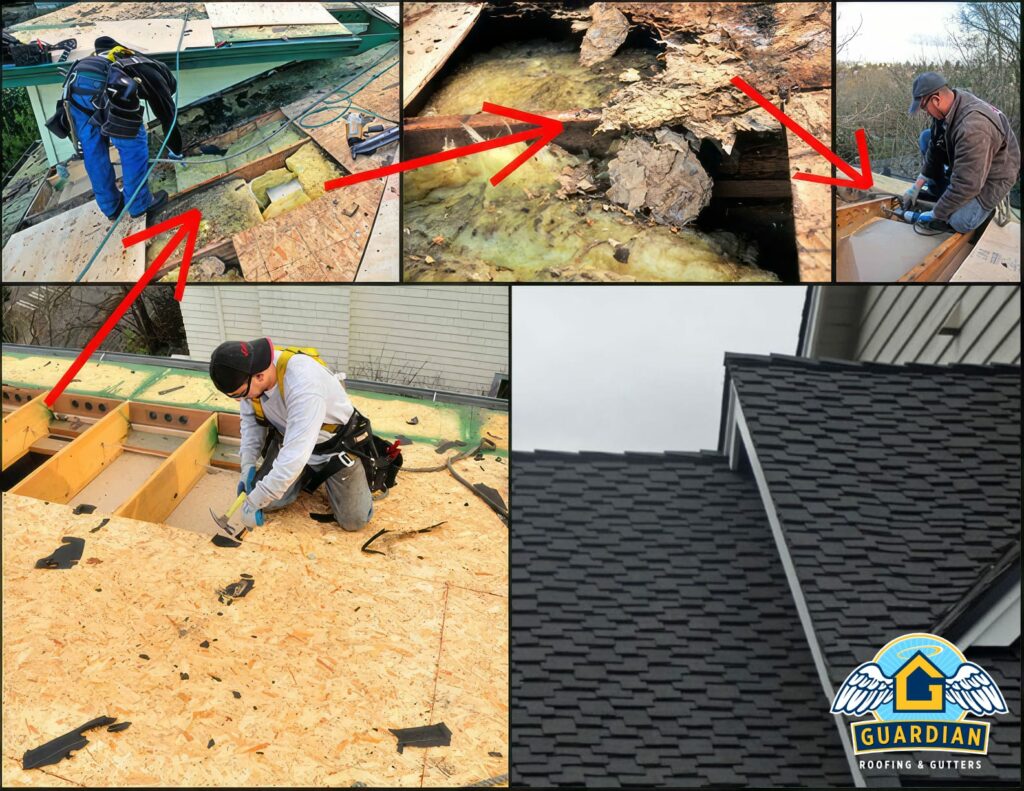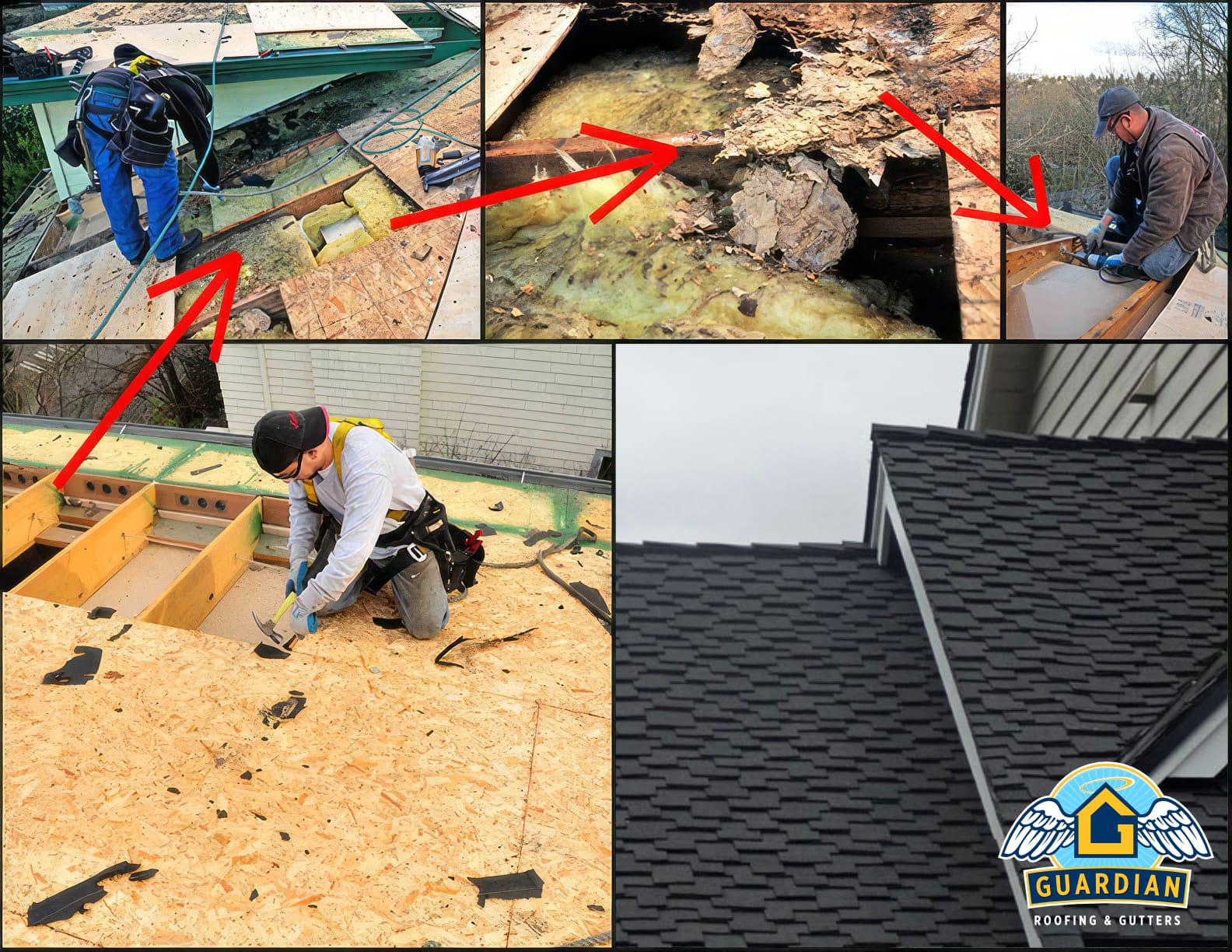If you can tell there’s a soft spot on your roof, this most likely means that the substrate below the roofing material is damaged and deteriorating. This can result from the plywood sheeting becoming wet from rain above or from moisture not escaping from below, leading to mold/mildew growth on the wood. If there is inadequate ventilation, the probability of moisture buildup and then mold/mildew growth is much higher. This can result in rotting substrates and cause spongy soft spots on the roof.
What Are Soft Spots on a Roof?
A soft spot on your roof is a weakened area where the decking or sheathing underneath your shingles has deteriorated. These spots can appear as wavy, buckled, or sagging shingles from the outside. You might notice discoloration, warped wood, or mold growth inside your attic. Walking on your roof and feeling a spongy or bouncy area is a clear indicator of a soft spot.
What Causes Soft Spots on a Roof?
Soft spots develop due to water damage and other structural issues, including:
-
Water Seepage & Poor Drainage – Gaps in shingles, cracked flashing, and clogged gutters allow moisture to penetrate your roof’s underlayment.
-
Aging Roof Materials – Over time, roofing materials weaken due to exposure to rain, snow, and extreme temperatures, making them more susceptible to soft spots.
-
Inadequate Ventilation – Without proper airflow, moisture gets trapped in the attic, leading to condensation and wood rot.
-
Heavy Snow & Ice Accumulation – Ice dams can cause water to back up under shingles, saturating the roof deck and weakening the structure.
-
Organic Debris Buildup – Leaves, twigs, and moss retain moisture and create an environment that accelerates rot.
Are Soft Spots on a Roof Dangerous?
Yes—soft spots indicate a compromised roofing structure. If left untreated, they can lead to:
-
Increased Risk of Leaks – Water can seep into your attic, damaging insulation and ceilings.
-
Mold & Mildew Growth – Persistent moisture encourages mold, which poses health risks.
-
Structural Damage – The weakened roof deck may lead to sagging or, in severe cases, collapse.
-
Costly Repairs or Full Roof Replacement – Small issues can escalate into major expenses if not addressed early.
When we roof a house, we use a plywood substrate rather than particle board — it’s stronger and more resilient to such occurrences, so keep this in mind when making decisions on your own roof.
This photograph shows the process of replacing the substrate and installing proper ventilation (added holes, or bird block vents, in the beams to let the air pass through). You can see the rotted particle board & insulation in the top left photos, Miguel drilling holes for ventilation, properly battened insulation (cardboard material to keep insulation from blocking airflow) and then your finished product in the bottom right.

Preventing Soft Spots on Your Roof
To avoid expensive repairs, follow these preventative measures:
- Schedule Regular Roof Inspections – A professional inspection can catch minor issues before they escalate.
- Keep Gutters Clean – Prevent water buildup by ensuring proper drainage.
- Trim Overhanging Trees – Reduce debris accumulation and minimize shaded areas where moisture lingers.
- Check for Missing or Damaged Shingles – Replace any compromised roofing material promptly.
- Ensure Proper Ventilation – Make sure your attic has adequate airflow to prevent condensation.
Guardian Roofing: Your Solution for Soft Spot Repairs
If you’ve noticed soft spots on your roof, don’t wait until the damage worsens. Guardian Roofing provides expert inspections, repairs, and preventative maintenance to keep your home protected. Our team specializes in identifying and fixing soft spots before they lead to bigger problems.

